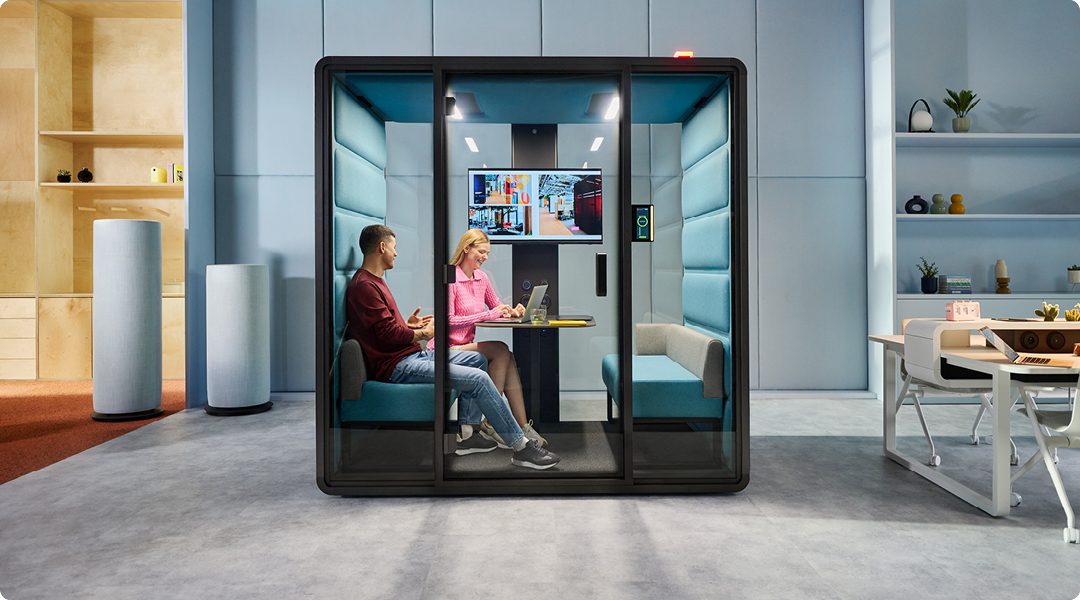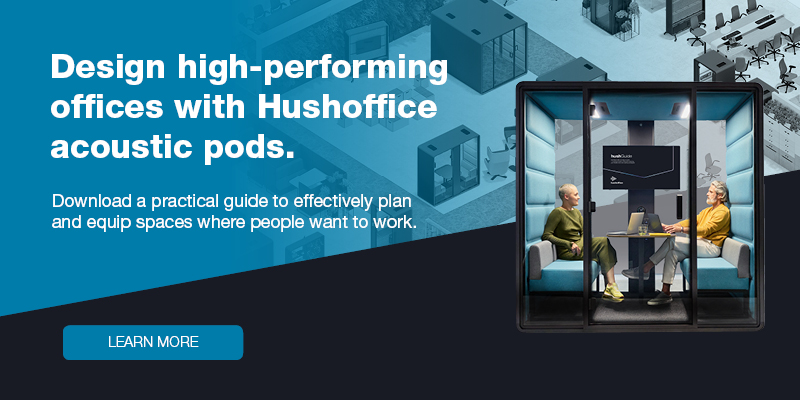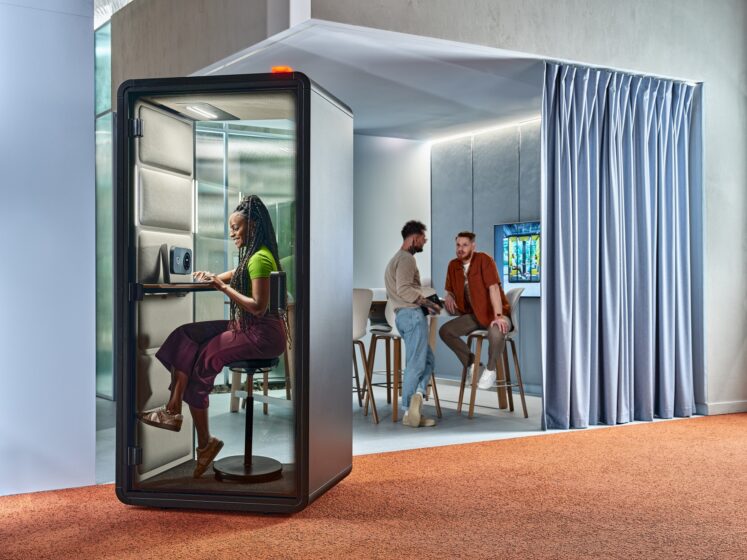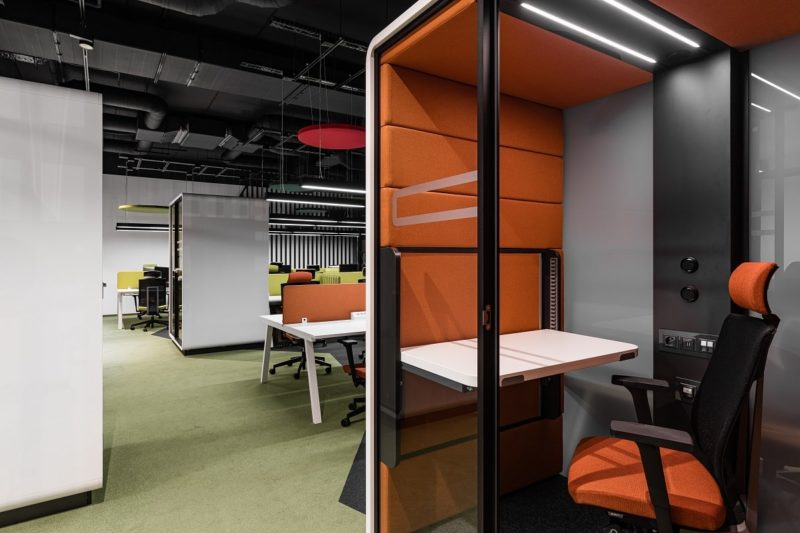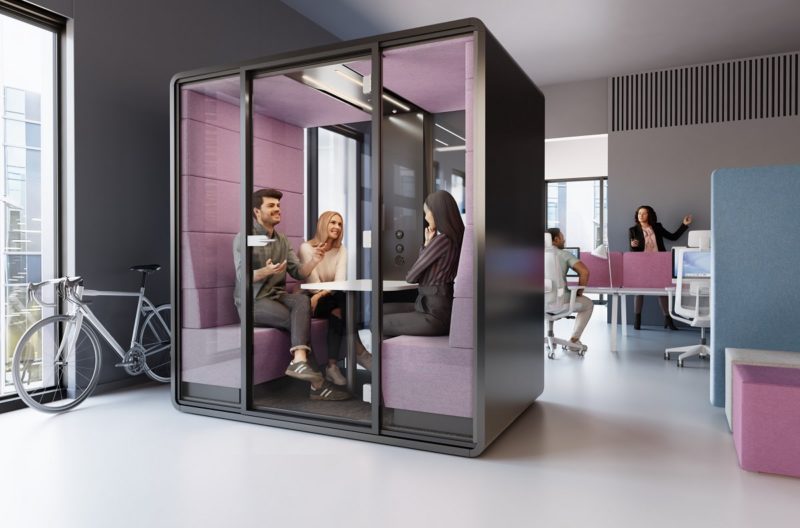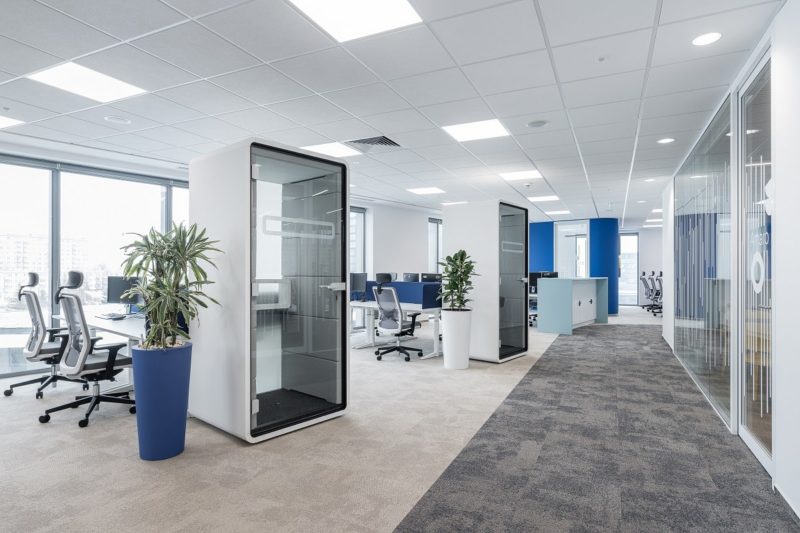ADHD employees deserve office work booths
- Posted on: 17 September 2024
- By: Hushoffice Team
Roughly 5% of people have Attention Deficit Hyperactivity Disorder, struggling with executive function deficits, dopamine dysregulation, and sensory processing sensitivity. These factors make it difficult for them to cope in busy spaces, making acoustic booths like hushFree… essential.
Roughly 5% of people have Attention Deficit Hyperactivity Disorder, struggling with executive function deficits, dopamine dysregulation, and sensory processing sensitivity. These factors make it difficult for them to cope in busy spaces, making acoustic booths like hushFree… essential.
ADHD friendly workspace – tl;dr
- ADHD employees benefit greatly from office booths, which provide vital refuge from distractions, helping them manage sensory sensitivity for better performance.
- A variety of workspaces, including quiet zones and flexible furniture, are crucial for supporting the unique needs and talents of a cognitively diverse team.
- Pods and booths are especially helpful in reducing stress and increasing concentration, unlocking the special potential of neurodivergent workers by offering a controlled, distraction-free environment.
Employees with ADHD. Special challenges. Special talents.
For someone with an attentional deficit, the difficulties they face in the workplace are but met in strength by their mind’s rare talents. But a characteristic sensory avoidance makes a purely office layout downright chaotic and distracting for them. Naturally, mere task completion is hard if not tiring or, in the worst case, demoralizing for someone who needs periodic alone time to thrive and can’t access it. Startling interruptions and constant background happenings will exacerbate this person’s symptoms which are on their own difficult to manage. But the bottom line is anyone with hyperactivity has an enormous capacity for single-minded, creative thought, given the right work environment
– says Mateusz Barczyk, Senior Brand Manager, Hushoffice.
Some of your most gifted workers may be robbed of their gifts entirely if your office lacks appropriate spaces of refuge like independent work booths or speech-private meeting pods. Refuge is so key to anyone’s sense of balance and autonomy, but in particular the neurodivergent’s.
How to design an office with ADHD in mind? Diversify through zones.
Quiet spaces are needed to escape the noise and think in private. Social, for social functions. Soothing colors and adjustable lighting can also help to create a more comfortable, less stimulating environment. And flexible furniture helps by fostering individualized comfort.
An ADHD-friendly office is friendlier to everyone, or neuro-inclusive.
Consider the element of privacy alone. Without secluded spaces in the office, ADHD employees feel exposed, constantly on edge, with limited chances at full engagement. But privacy isn’t crucial just for them — it benefits everyone, offering anyone security and control over one’s work environment.
Finding silence in a noisy world. Acoustic office booths bring calm.
One need only to understand how someone with ADHD’s brain works to appreciate the plain necessity for perfectly quiet, private spaces in the office like pods.
- Individuals with ADHD often have deficits in executive functions, affecting planning, attention, and self-regulation.
- Altered activity in the prefrontal cortex also leads to difficulties in focusing, organizing, and prioritizing tasks.
- Heightened sensory reactivity means constant noise and movement can cause sensory overload, increasing stress.
- Office quiet booths provide a sanctuary from the stimuli, offering a controlled, quiet environment that supports executive function.
A serene environment like the hushFree.L large conference cabin ultimately helps the prefrontal cortex function better, leading to stronger concentration and productivity with the quintessential perk of lowered anxiety.
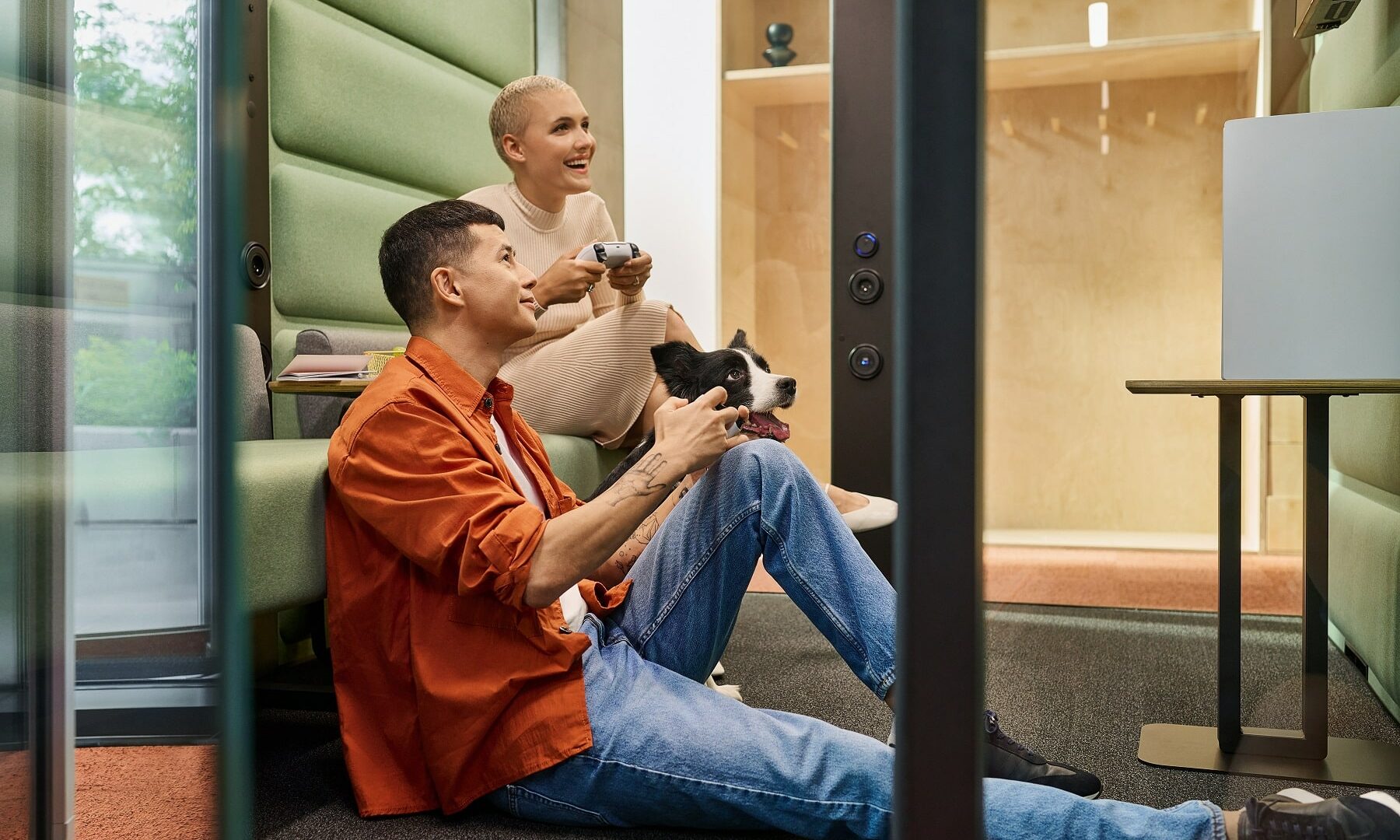
The need for quietude is something universal, and regards much more than distractions.
It’s not just office distractions that trouble employees with ADHD. It is also lacking personal space. Indeed, without personal space, anyone feels overwhelmed, infringed upon, and distressed, unable to manage their environment or find peace within it. A booth is personal space by design!
Alone time supports fluent, flexible thinking.
Quiet spaces in the office are foundational. They help anyone with attention challenges find ease, freed of the hubbub. And for those with ADHD in particular, more structured and predictable “quiet spaces” like pods also reduce cognitive load, aiding in more coherent, uninterrupted thought processes.
Like music, a mix of acoustic spaces is pivotal.
To accommodate a cognitively diverse team, a variety of spaces with different acoustic qualities will work best. Hushed corners, social lounges, private pods, lively coworking tables, and sound-insulating phone booths.
Color. Light. Minimal peripheral activity. ADHD-friendly spaces are visually tuned.
Blues and greens, for instance, are more soothing than stimulating. And adjustable lighting is simply key, an untapped aspect of ergonomic comfort, letting employees set the exact ambiance suited to their needs.
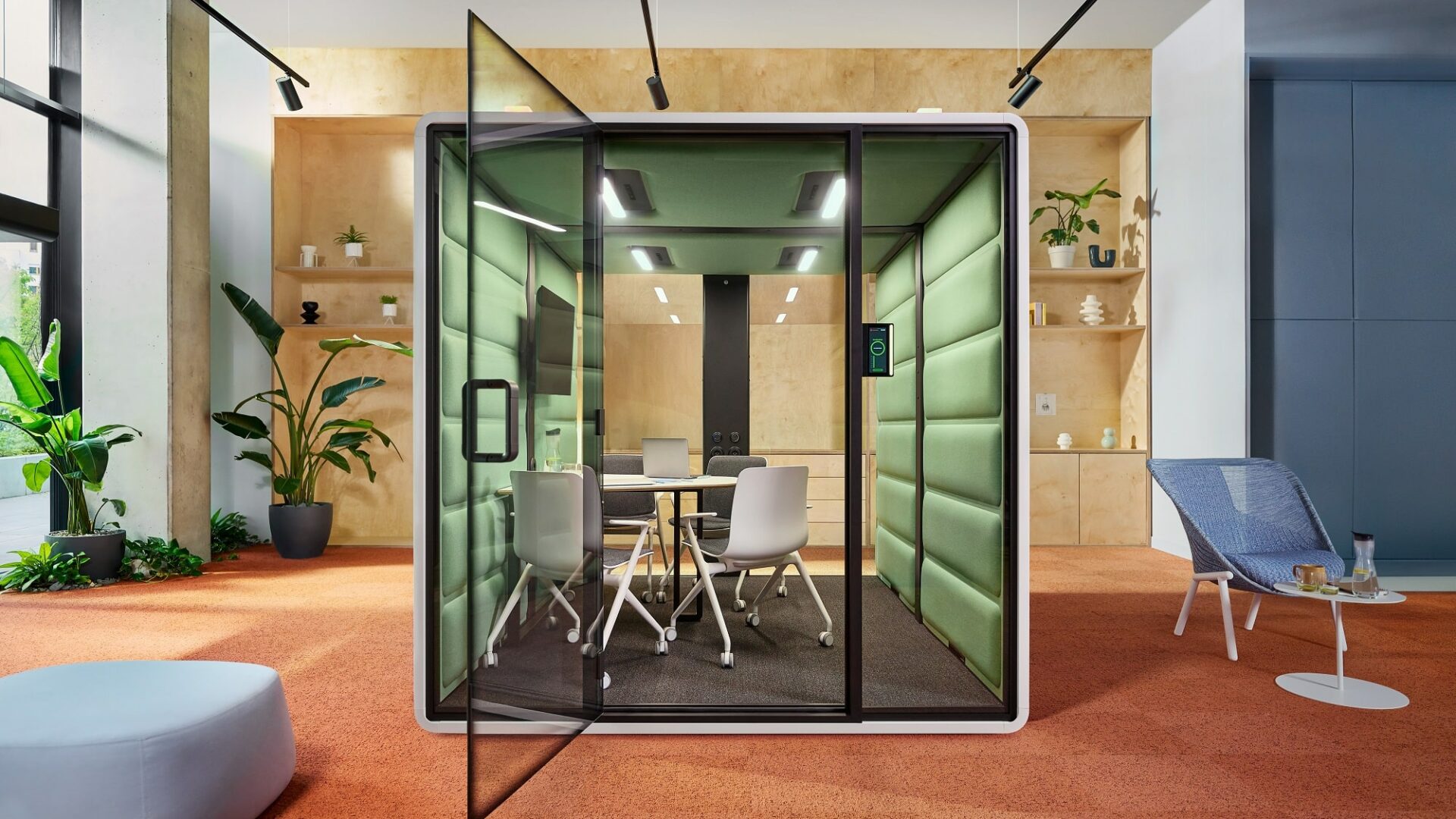
The benefits of working in an office booth are both psychological and emotional.
Booths are about sovereignty over space. They are a controlled, controllable environment — acoustically crafted, enveloping you in the most natural and productive type of quiet, with adjustable lights and fans for peak comfort. And they eliminate all anxiety to do with unexpected interruptions.
Acoustic booths in the workplace — serious benefits for adults with ADHD.
Without even a whisper of background office noise disrupting it, a bright mind can soar. Indeed, work and meeting booths are the much-needed quiet zones for the sensory-avoidant. They hush all ambient noise into a pleasant, dull hum. Reduced stimuli means real concentration.
A booth’s acoustic privacy offers distraction-free discretion.
Self-contained pods and booths help those with ADHD carry out tasks without the constant need to shift attention, which is both exhausting and counterproductive. By affording precious acoustic privacy, they support a fine focus that is otherwise out of reach for many in open working spaces.
Peace-and-quiet. Less stimuli. Less stress. Better workdays.
Booths shut out stimuli, easing the overwhelm of constant clamor that triggers those with attention challenges. Just retreating to one for half-hour blocks can make a big difference — less sensory input throughout the day will clarify focus and, as importantly, enhance one’s feeling of peace.
Energy and creativity. Can pods and booths unlock the ADHD mind’s potential?
Many will tell you that living with ADHD is like having a high-powered engine for a brain. It’s capable of amazing bursts of speed and novel thinking, but needs a smooth road and proper barriers to avoid spinning out of control. In the office, private workspaces function as those necessary barriers.
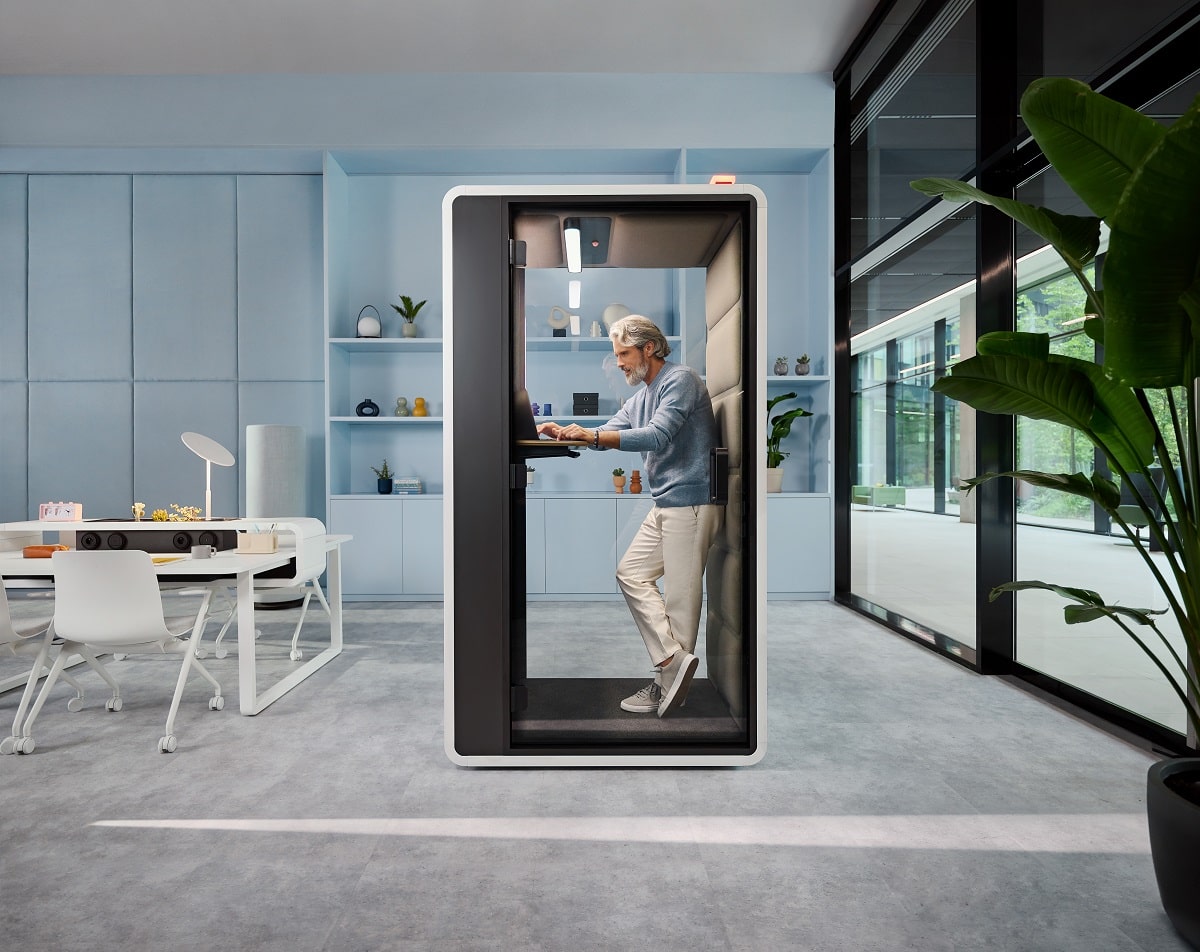
Hyperfocus is a superpower!
Hyperfocus in people with ADHD is laser-like concentration on a task, often to the exclusion of everything else. It’s as if the rest of the world fades away, allowing one to channel every ounce of mental reserves into a sole point of interest. Think: a burst of exceptional productivity.
Better management of impulsivity and overactivity.
Office booths help people manage impulsivity and overactivity simply by reducing external stimuli. In essence, they are an environment that works for rather than against the employee.
Between concentration and cooperation — flexible use of privacy booths.
The ADHD brain can make unconventional connections that others might not see, leading to bold ideas and approaches. Their divergent way of thinking is truly different. They often have an abundance of infectious energy, becoming a big part of the enthusiasm that drives teams. Their strong sense of curiosity makes them eager to learn new things. Their spontaneous nature is enlivening. Someone who has an attentional deficit offers classical talents to a team. And since their main battle is overstimulation, it becomes imperative to outfit the office with a solution like office pods which are, in a way, like at-hand sensory deprivation, allowing the overtaxed to relax, insulated from the office floor’s activities for moments of calm, undisrupted effort, or confidential meetings
says Mateusz Barczyk, Senior Brand Manager, Hushoffice.
Quiet meetings. Multi-person booths make team dynamics more functional.
HushFree.L is a high-quality team meeting booth for 4-6 people depending on how it is furnished. By shielding a group from interruptions — both exterior noise and peripheral activities on the floor — it fosters collective focus from the most diverse of teams, cognitively and otherwise.
Freedom to choose where to work — book a booth according to your needs.
Booths are a bookable space with an adjustable interior. They give employees real control over their environment during one-on-ones, client meetings, and other critical touchpoints. This control is particularly helpful for ADHD individuals who fight to focus or find ease in unstable spaces.
What else for diverse teams? HushWall multi-function divider.
Open workspaces do have their place in a typical ADHD employee’s dream layout. This will include breakout furniture, fully equipped coworking bench tables, and double sided, rollable partitions like hushWall. Indeed, some people with ADHD actually do well in environments with lots of activity and stimulation. The dynamic nature of a busy setting can help keep their minds engaged. In tasks that are routine or monotonous, a bustling environment can provide the necessary variety and excitement to hold their attention and prevent boredom. And paradoxically, the chaos of a happening space can trigger hyperfocus. No matter the cognitive wiring, what we find is that preferences play out on a spectrum, and the best way to cater to this spectrum is with a well-thought out range of work settings in the office, from private work pods to project tables
– says Mateusz Barczyk, Senior Brand Manager, Hushoffice.
ADHD friendly workspace – summarized
- ADHD employees benefit greatly from office booths, which provide vital refuge from distractions, helping them manage sensory sensitivity for better performance.
- A variety of workspaces, including quiet zones and flexible furniture, are crucial for supporting the unique needs and talents of a cognitively diverse team.
- Pods and booths are especially helpful in reducing stress and increasing concentration, unlocking the special potential of neurodivergent workers by offering a controlled, distraction-free environment.
ADHD friendly office design – frequently asked questions
What is the best office layout for ADHD?
A balance of flexibility, control, and sensory management. Seclusive spaces like booths are needed for people to retreat to, working with diligence and minimized distractions. Consider designating select open areas for teamwork. And provide informal, relaxed areas for short breaks or casual discussions.
How do you manage ADHD in an office?
Access to quiet, low-distraction areas is critical. Employees should also be able to customize their workspaces with tools, lighting, and seating that best suit their needs. Regular one-on-one meetings to discuss workloads, challenges, and any accommodations that may be needed are a great idea. Needs are ultimately both individual and changing.
How to make an open space office work for ADHD employees?
There are many items that can make an open space work for the neurodivergent. Acoustic insulation is one of them. Make sure your office’s soundscape has variety. Areas of hush should balance o
